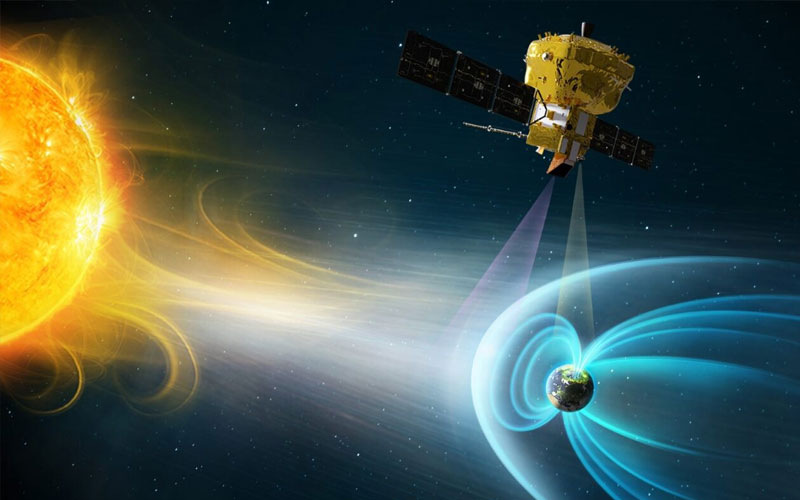
The European Space Agency has signed an agreement with Arianespace for the launch of its SMILE solar wind mission aboard a Vega C rocket in late 2025.
The Solar wind Magnetosphere Ionosphere Link Explorer (SMILE) is a joint initiative between ESA and the Chinese Academy of Sciences. The 2,200-kilogram spacecraft will study Earth’s magnetic environment on a global scale. The aim of the mission is to build a more complete understanding of the Sun-Earth connection. SMILE was selected by the pair in 2015 from a pool of 13 proposals and is the first time ESA and China have jointly selected, designed, implemented, launched, and operated a space mission.
On 30 April, ESA officially signed the launch contract with Arianespace to carry the satellite to orbit aboard a Vega C rocket launch from the Guiana Space Centre.
“This signature marks over four years of collaborative efforts between Arianespace and ESA Science teams to develop the Smile mission with a Vega-C launcher,” explained Arianespace CEO Stéphane Israël.
While the launch has been signed under the Arianespace letterhead, the launch will likely not remain under its stewardship.
In late 2023, ESA member states agreed to allow Avio to market and manage the launch of Vega C flights independent of Arianespace. When the deal was initially struck, 17 flights were contracted through Arianespace to be launched aboard Vega vehicles. While these missions are still managed by Arianespace, Avio is working with the launch provider to strike a deal that would allow the Italian rocket builder to assume the management of all Vega flights.
Vega C return to flight
In late 2022, Vega C was grounded after a failed launch that resulted in the loss of a pair of Pléiades-Neo Earth observation satellites. Following an investigation, the cause of the failure was identified as the carbon-carbon material used to manufacture the throat insert of the Zerfiro 40 (Z40) solid-fuel second stage.
In June 2023, a new carbon-carbon material was utilized during a hot fire ground test to recertify the Z40 solid-fuel stage fit for flight. The test ended in failure. After an investigation, it was determined that the Z40 nozzle would need to be redesigned before Vega C could be returned to flight.
In late March 2024, Avio CEO Giulio Ranzo announced on LinkedIn that the company had successfully completed the redesign of the Z40 nozzle and manufactured the first instance of the new nozzle.
Before the new design is certified fit for flight, Avio is required to conduct two hot fire ground tests of the stage. The two tests are expected to be conducted in the second and third quarters of this year. The company then plans to launch the Vega C return-to-flight mission before the end of 2024.




